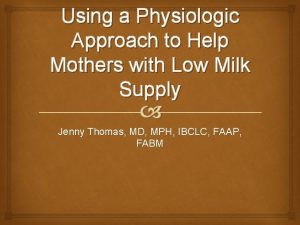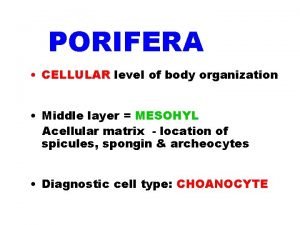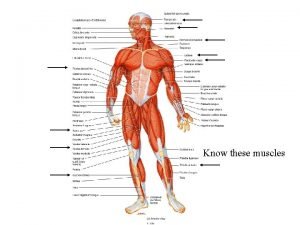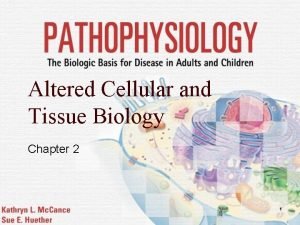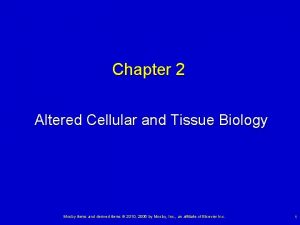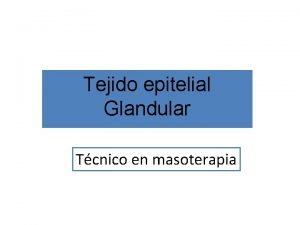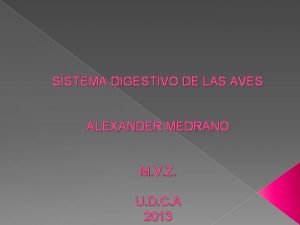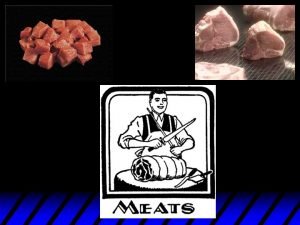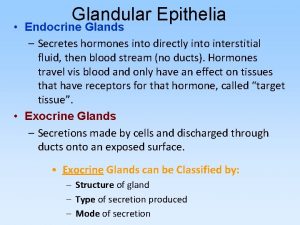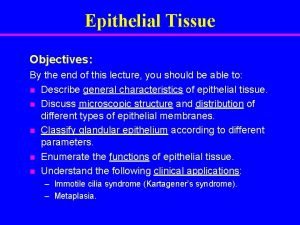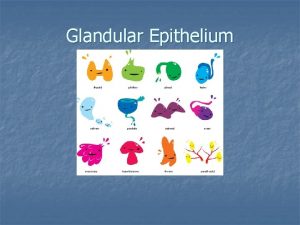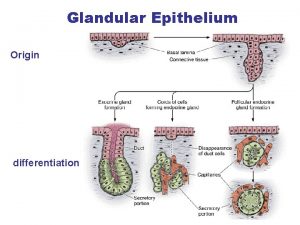Cellular Organisation Key words Muscular tissue glandular tissue














- Slides: 14

Cellular Organisation Key words: Muscular tissue, glandular tissue, epithelial tissue Starter: Give 3 differences between a plant and an animal cell. * ** *** To describe how cells, tissues, organs and organ systems are organised To compare the different types of tissues. To apply knowledge to the human digestive system

The big picture: “How is the digestive system organised? ” Learning outcomes: ü To describe how cells, tissues, organs and organ systems are organised. ü To compare the different types of tissues. ü To apply knowledge to the human digestive system. * ** *** To describe how cells, tissues, organs and organ systems are organised To compare the different types of tissues. To apply knowledge to the human digestive system

Task 1 Match up the definitions and examples for each level or organisation in an organism. LO: To describe how cells, tissues, organs and organ systems are organised. * ** *** To describe how cells, tissues, organs and organ systems are organised To compare the different types of tissues. To apply knowledge to the human digestive system

Level of organisation (smallest to biggest) Definition Example in plants Example in animals Cells Tissues Organ system Organism * ** *** To describe how cells, tissues, organs and organ systems are organised To compare the different types of tissues. To apply knowledge to the human digestive system

Level of organisation (smallest to biggest) Definition Example in plants Example in animals Cells A group of cells with a similar structure and function, which all work together to do a particular job. Daffodil Digestive system Tissues Made from a group of different tissues, which all work together to do a particular job. Palisade cell Stomach Organs Made from a group of different organs, which all work together to do a particular job. Leaf epithelium Human Organ system The smallest unit of an organism Leaves Glandular cells Organism An individual plant, animal, or single-celled organism. Photosynthetic system Stomach lining * ** *** To describe how cells, tissues, organs and organ systems are organised To compare the different types of tissues. To apply knowledge to the human digestive system

Types of tissues A tissue is a group of cells with similar structure and function. Examples of tissues include: ■ muscular tissue, which can contract to bring about movement ■ glandular tissue, tissue which can produce substances such as enzymes and hormones ■ epithelial tissue, which covers some parts of the body. * ** *** To describe how cells, tissues, organs and organ systems are organised To compare the different types of tissues. To apply knowledge to the human digestive system

Task 2 You will have 5 minutes to learn about each type of tissue in the human body. You should 1) Read and highlight the information 2) Stick in each sheet in your book 3) Answer the questions on your book. * ** *** To describe how cells, tissues, organs and organ systems are organised To compare the different types of tissues. To apply knowledge to the human digestive system

A: Muscular tissue Muscle is a very specialised tissue that has both the ability to contract and the ability to conduct electrical impulses. Muscles are classified functionally as either voluntary or involuntary. Questions 1. What does specialised mean? 2. What does muscle tissue can do? 3. Give an example of a muscle with contracts voluntarily and one that contracts involuntarily. * ** *** To describe how cells, tissues, organs and organ systems are organised To compare the different types of tissues. To apply knowledge to the human digestive system

B: Glandular tissue is involved with delivering hormones in the body. This tissue is rich in capillaries. Each cell must contact a capillary directly in order to deliver its hormone to the rest of the body. Questions 1. Give one example of where glandular tissue is found in the body. 2. Why must the glandular tissue be close to capillaries. 3. Give the name of a hormone produced by the human body * ** *** To describe how cells, tissues, organs and organ systems are organised To compare the different types of tissues. To apply knowledge to the human digestive system

C: Epithelial Tissue Questions 1. How are epithelial tissues specialised? What are they evolved to do? 2. Where in the body would you find epithelial tissue? * To describe how cells, tissues, organs and organ systems are organised Epithelial tissue covers the whole surface of the body. It is made up of cells closely packed in one or more layers. This tissue is specialised to form the covering or lining of internal and external body surfaces. Epithelial tissue that occurs on surfaces on the interior of the body is known as endothelium. ** *** To compare the different types of tissues. To apply knowledge to the human digestive system

* ** *** To describe how cells, tissues, organs and organ systems are organised To compare the different types of tissues. To apply knowledge to the human digestive system

Task 3 Apply your knowledge of cell organisation to the human digestive system. * ** *** To describe how cells, tissues, organs and organ systems are organised To compare the different types of tissues. To apply knowledge to the human digestive system

Where will you find epithelial tissue? What are some of its functions? Name 1 substance produced by glandular tissue, and the organ(s) that produce it What is the job of muscle tissue? * ** *** To describe how cells, tissues, organs and organ systems are organised To compare the different types of tissues. To apply knowledge to the human digestive system

Plenary: Size and scale in relation to cells, tissues, organs and organ systems. . . List the following structures, starting with the smallest Liver Human cheek cell Mitochondrion Bacterial cell Heart Ribosome Digestive system * ** *** To describe how cells, tissues, organs and organ systems are organised To compare the different types of tissues. To apply knowledge to the human digestive system
 Insufficient glandular tissue pictures
Insufficient glandular tissue pictures Epitelio glandular holocrino
Epitelio glandular holocrino Cellular level of organisation
Cellular level of organisation Differentiate muscular strength from muscular endurance
Differentiate muscular strength from muscular endurance Functions of skeletal muscle
Functions of skeletal muscle Structural proteins in muscle
Structural proteins in muscle Muscular tissue
Muscular tissue Altered cellular and tissue biology
Altered cellular and tissue biology Altered cellular and tissue biology
Altered cellular and tissue biology Tubuloacinosa compuesta
Tubuloacinosa compuesta Organ parenchimatos
Organ parenchimatos Estomagos de las aves
Estomagos de las aves Glandular meats
Glandular meats Glandular epithelia
Glandular epithelia Epithelial tissue
Epithelial tissue
